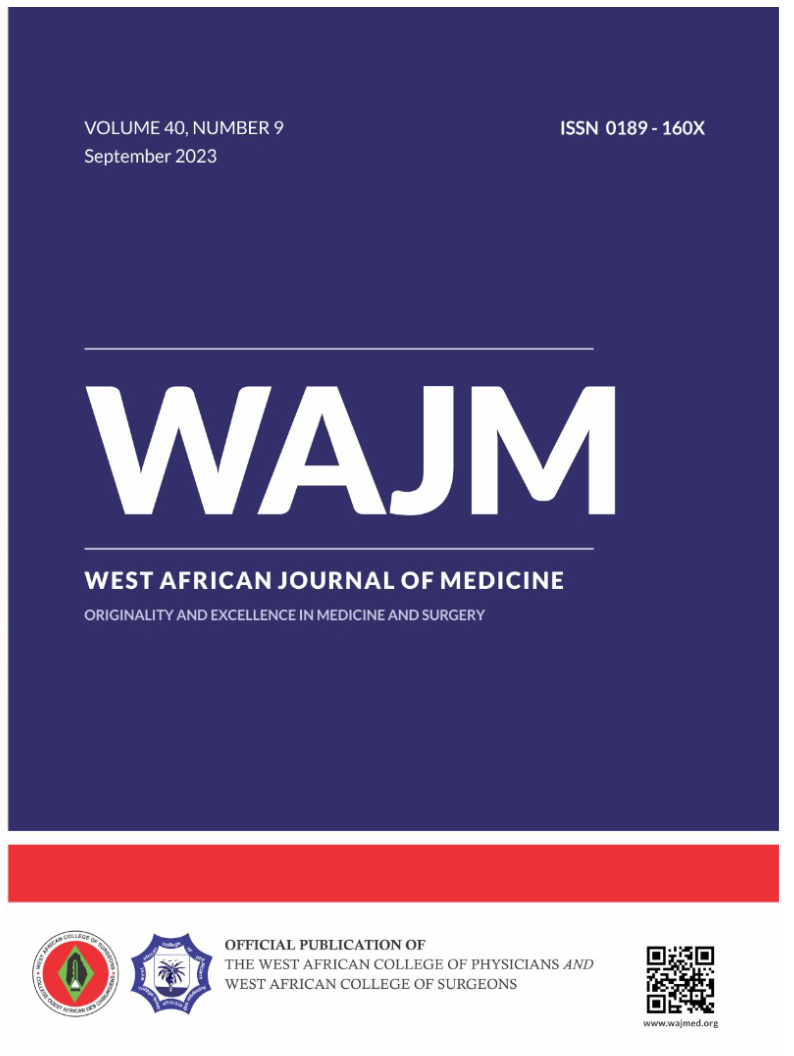ORIGINAL ARTICLE Survey on the Knowledge and Management of Cancer-Associated Thrombosis (CAT) in Haemato-Oncology Patients with Thrombocytopenia among Haematologists and Haematology Residents in Nigeria
West Afr J Med. September 2023; 40 (9): 956-961
Keywords:
Bleeding, Cancer-associated thrombosis, Haemato-oncology, Thrombocytopenia, ThrombosisAbstract
Background: Arterial or venous thrombosis can complicate cancer, and 20% of cancer patients may develop venous thromboembolic disorders. Venous thromboembolism (VTE) is common in some haematologic malignancies and may coexist with thrombocytopenia in those haematologic malignancies. We carried out this survey to assess the knowledge and practice of haematologists and resident doctors in haematology in Nigeria regarding the management of thrombocytopenia and cancer-associated thrombosis.
Methods: This was a survey that was shared electronically with participants who were consultant haematologists and resident doctors in haematology in Nigeria..
Results: There were 106 respondents, 70 (66%) of which were consultant haematologists. About a third (30.2%) of the respondents saw 6-10 patients with blood malignancies monthly. Fifty-seven (53.8%) of the respondents carried out risk assessment in their patients for cancer-associated thrombosis (CAT); 63 (59.4%) of the respondents saw 1-2 cancer patients with thrombosis in 3 months. The most common mode of treatment was pharmacological - 94 (88%) respondents used low molecular weight heparin. The most common haematologic malignancies associated with thrombocytopenia were acute leukaemias (69; 67%). The most common decision taken by respondents was to stop anticoagulants and transfuse platelets because the most frequent concern was the risk of bleeding in this group of patients.
Conclusion: Many haematologists and haematology residents had a high level of awareness, knowledge and good practice regarding thrombocytopenia with CAT in haematooncology patients; however, there is a need for improved knowledge and unified protocols for treatment in line with newer management guidelines.


